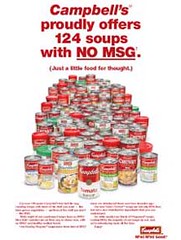
Ragan recently released the results of a poll that asked a series of questions regarding anonymous comments. More than 1,000 communicators responded.
Highlights: How Organizations View Anonymous Comments
• 46 percent of their organizations do not allow anonymous comments.
• 46 percent of their organizations do not allow comments of any kind.
• 14 percent of their organizations do allow anonymous comments.
Highlights: How Communicators See Anonymous Comments
• 37 percent were undecided whether anonymous comments should be allowed.
• 31 percent said anonymous comments on blogs and article should not be allowed.
• 32 percent believe anon anonymous comments on blogs and articles should be allowed.
“Our company does not appreciate feedback of any kind from employees, not even on a person-to-person basis. Management is averse to following anything to be made publicly available without executive review.” — Anonymous
How Companies Might Come To Cope With Anonymous Comments
Social media — blogs, forums, Internets — is not a cookie cutter operation, internally or externally. And the decision to allow or disallow anonymous comments might be made with that in mind. Take a look around the Internet and you'll see a great variety of conclusions on the subject to guide you.
This blog, for example, allows anonymous comments. The only comments that are ever deleted are spam ads. We made this decision because we wanted a place where people could engage in open, candid discussions about communication.
However, I also believe that there are only two ways that anonymous posters demonstrate credibility: the quality of the comment, which means whether the post provides insights over insults. And, how or if we respond to the comment.
Why Companies Might Consider Moderated Comments
We manage several other blogs that are much more heavily moderated. The National Business Community Blog is not well-suited for unmoderated comments.
It only has one purpose: to share stories about companies that do good. Every now and again, one example or best practice comes from a company with known dissenters and we become privileged to receive a deluge of negative comments about it.
None of these comments are ever published because we feel strongly that it distracts from our intent. Every now and again, people like to visit a blog void of discussion or drama. We do read the comments though, and on one occasion removed the post.
Why Companies Might Consider No Comments At All
The intent is myopic, like using a blog to publish new releases, white papers, and feature stories about the company. Many social media experts disagree with me on this point, but my feeling is that the long tail of social media need not wag the company dog. If a company doesn't want to benefit from any dialogue from employees, customers, and any other stakeholders, then there is no need for us to force them to.
The only other reason I can think of is that the company representatives, whether a CEO or communicator, are not well skilled in dealing with the occasional criticism, call out, or attack. It takes a balanced hand to respond, which is important to consider since most crisis communication situations have very little to do with what happens and everything to do with how we respond.
What I Teach Students About Being Anonymous
There is no black or white and yes or no answer. Each company, hopefully with input from their communication team, can make the right choice.
However, and I cannot stress this enough, I do advise communicators and public relations professionals to never make anonymous comments or, if they do, they need to be prepared to answer for such posts in a world where no communication is really private. Not anymore.





















